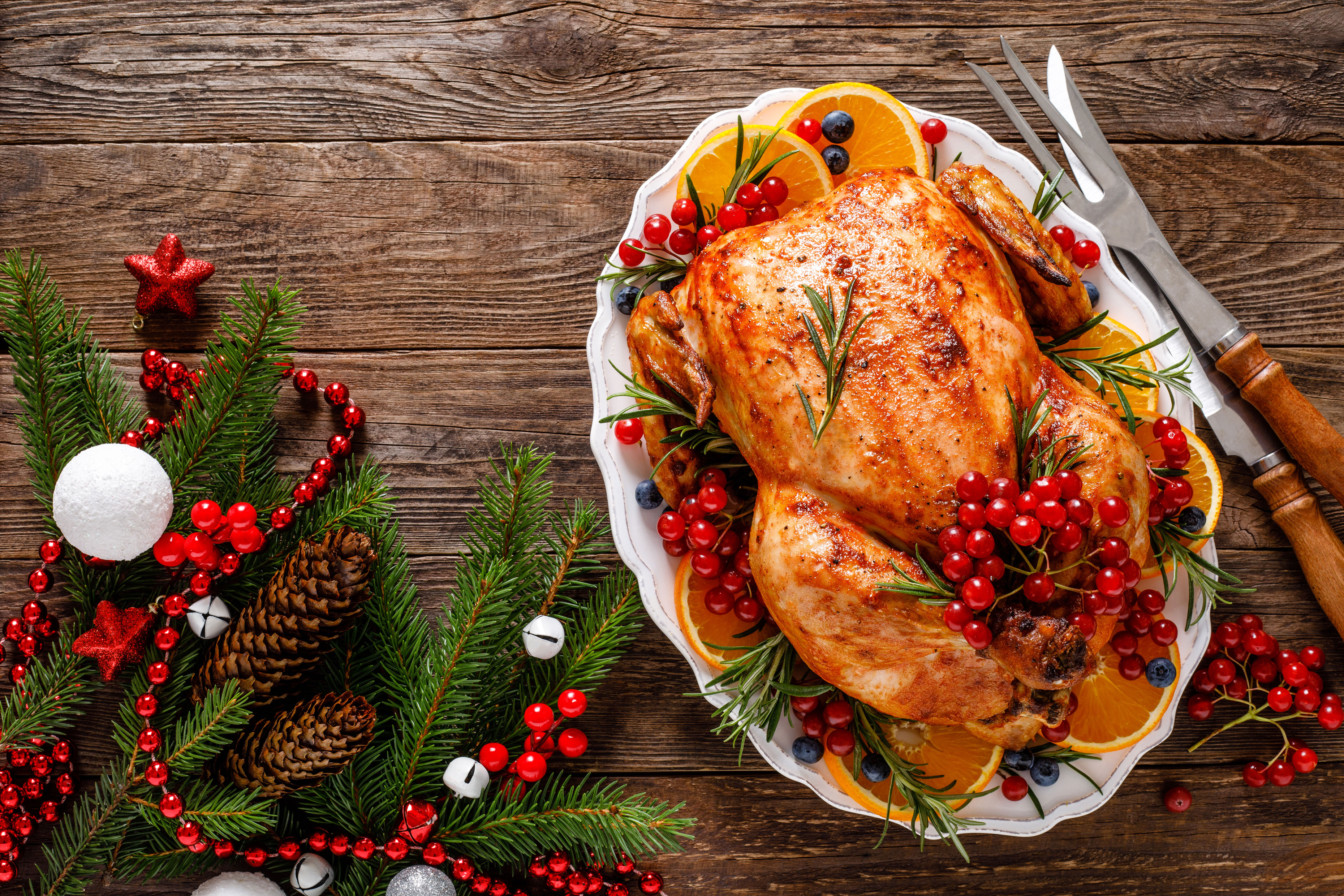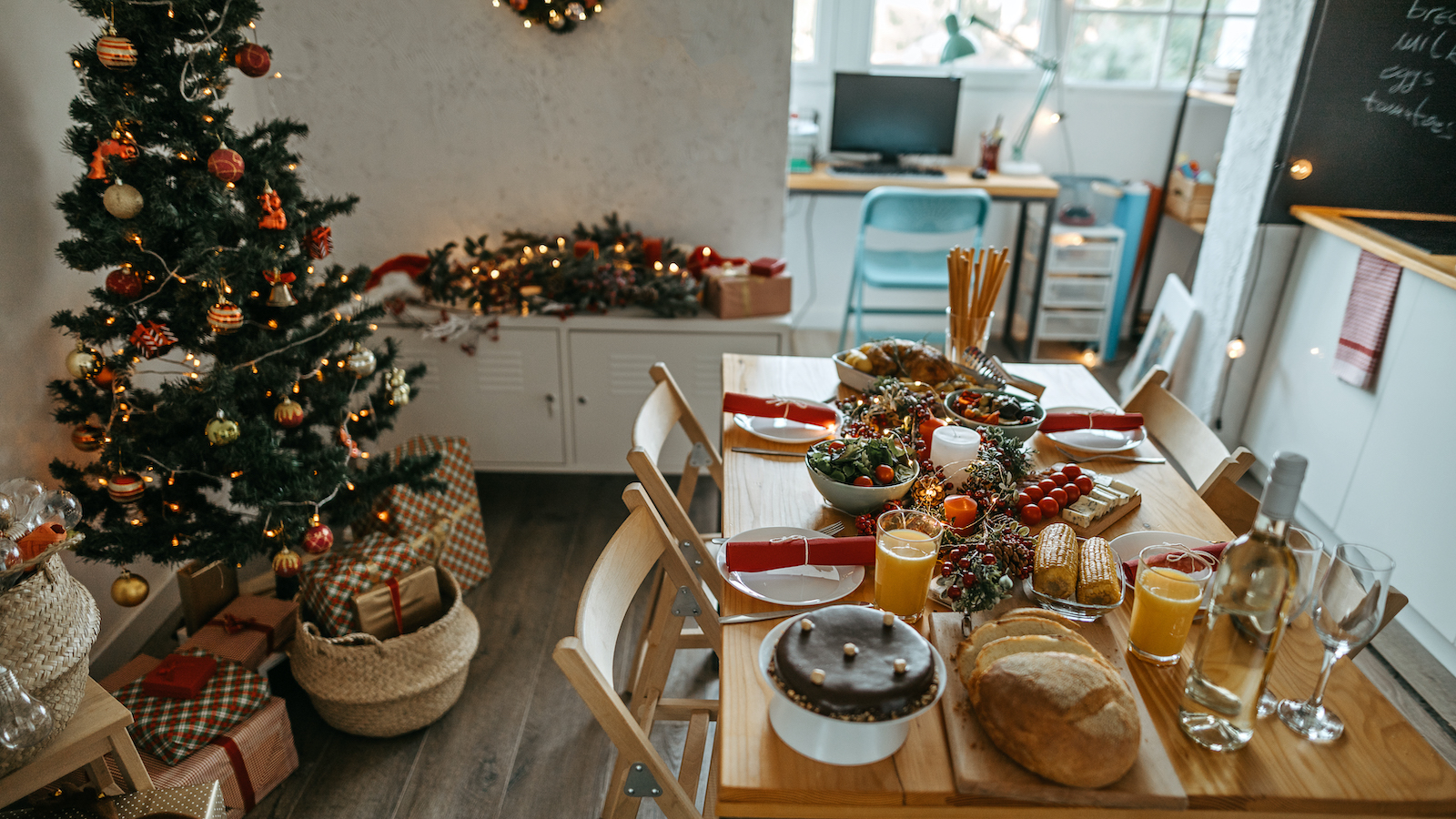

Knowing how to defrost turkey properly is a must in the run up to Christmas – both so that it's as tasty as can be, but also safe to eat. You've probably heard horror stories about turkeys that never cooked through in the middle because they weren't defrosted properly; fortunately, this particular fiasco is easily avoidable. Follow our guidelines to thaw your turkey safely in our simple step-by-step guide.
For more recipes ideas and food know how, see our dedicated page, and browse our Christmas dinner ideas for more festive inspiration.
1. Defrost a turkey in the fridge
This is the ideal because it's certainly the safest way to defrost a turkey. Ensure the fridge temperature is lower than 4ºC, keep the turkey in its packaging, put it in a deep tray to catch any drips, and allow between eight to 12 hours per kilogram.
Once it's defrosted it will keep safely in the fridge for up to two days – so it's better to start defrosting a little early rather than too late.
2. Defrost a turkey in a cool room
If there's absolutely no room to defrost your turkey in a fridge, the next best option is in a cool room (by which we mean below 15ºC). This might be a cool utility, an outhouse or perhaps even a shed; if so, make sure the space isn't accessible to local foxes/the cat/the dog. Allow three to four hours per kilogram to defrost; again, keep it in its packaging and on a tray (or even in a bucket).
3. Defrost a turkey at room temperature
You know what? We wouldn't. You're compromising food safety by doing so. But if it's absolutely your only option, allow no more than two hours per kilogram, keeping it on a tray and in its packaging while it thaws. Once it's thawed it needs to go straight in the oven or into the fridge.
4. How to tell if your turkey has defrosted
There will be no sign of ice on or inside the turkey and you'll be able to wobble its legs and wings if it's thawed properly.
Join our newsletter
Get small space home decor ideas, celeb inspiration, DIY tips and more, straight to your inbox!
5. What to do once your turkey has defrosted
Remove all its packaging, plus the giblets, which can be stored in the fridge for making stock. Place the turkey back on its deep tray, wash your hands thoroughly and cover it. Put it back into the fridge, ideally in the lower half, and check fridge temperature is no higher than 4ºC.
6. Can frozen turkey be refrozen?
Not unless it's cooked (see below). Once you've defrosted raw turkey, it cannot be refrozen.
7. Can cooked turkey be frozen?
You can keep your leftover turkey in the fridge for up to four days, but if you want to freeze it, first remove the meat from the bone, then put it into a freezer-proof container, pour over some stock or gravy, put on a lid and freeze. Using the stock/gravy in the container will help the meat stay moist while frozen.
To defrost cooked turkey, keep it in its container and place it in the fridge until it's entirely thawed. It can then be reheated thoroughly, but do not refreeze.
8. How to defrost turkey in the microwave
This method is a little finicky, but if you've got no other option and not much time left before the turkey needs to be cooked, then you can defrost your turkey in the microwave – provided it fits, of course.
First, remove all packaging and the giblets. Then, place the turkey onto a microwave-safe tray and heat on the defrost setting for half an hour. After that, you'll need to keep defrosting in five-minute increments until the turkey has completely defrosted in the middle – just be careful not to overdo it, or you'll start cooking your turkey.
Lucy is Global Editor-in-Chief of Homes & Gardens having worked on numerous interiors and property titles. She was founding Editor of Channel 4’s 4Homes magazine, was Associate Editor at Ideal Home, before becoming Editor-in-Chief of Realhomes.com in 2018 then moving to Homes & Gardens in 2021. She has also written for Huffington Post, AOL, UKTV, MSN, House Beautiful, Good Homes, and many women’s titles. Find her writing about everything from buying and selling property, self build, DIY, design and consumer issues to gardening.
-
 How to host Christmas in a small space —7 tips from design pros
How to host Christmas in a small space —7 tips from design prosWe asked designers how to host Christmas in a small space, and they've mapped it all out with these 7 fabulous tips
By Danielle Valente Published
-
 This TikTok Christmas tree hack is perfect for small space dwellers
This TikTok Christmas tree hack is perfect for small space dwellersWe spoke to crafter Emma Villaneda about her TikTok Christmas tree hack and how to do it
By Danielle Valente Published
-
 Yikes! A sleep psychologist reveals the Christmas lights to avoid if you want some shut-eye
Yikes! A sleep psychologist reveals the Christmas lights to avoid if you want some shut-eyeA sleep psychologist reveals the best and worst Christmas lights for sleep and how to adjust accordingly
By Danielle Valente Published
-
 6 cottagecore Christmas decorating ideas that will give you the warm and fuzzies
6 cottagecore Christmas decorating ideas that will give you the warm and fuzziesOur edit of Cottagecore Christmas decorating ideas will show you how to cozy up your space for the holidays
By Danielle Valente Published
-
 4 white Christmas decor ideas and how to style them to perfection this holiday season
4 white Christmas decor ideas and how to style them to perfection this holiday seasonOur edit of white Christmas decor ideas — and tips from interior designers — will make you ditch the red and green
By Danielle Valente Published
-
 How to decorate for Christmas according to your star sign — let the cosmos help find your holiday style
How to decorate for Christmas according to your star sign — let the cosmos help find your holiday styleWe spoke to the experts about how to decorate for Christmas according to your star sign
By Danielle Valente Published
-
 5 renter-friendly Christmas decorating ideas that are perfect but not permanent — here's how to style them
5 renter-friendly Christmas decorating ideas that are perfect but not permanent — here's how to style themRenter-friendly Christmas decorating ideas that you'll love and your landlord will appreciate
By Danielle Valente Published
-
 How to decorate a small bedroom for Christmas — five clever ways to add a festive feel to your sleep space
How to decorate a small bedroom for Christmas — five clever ways to add a festive feel to your sleep spaceOur edit reveals how to decorate a small bedroom for Christmas so that your space is festive and cozy
By Danielle Valente Published